#Bioregionalism
Explore tagged Tumblr posts
Text
Solarpunk Art 2024 (New Dreams of Labour)

City Planners by @buttercuipp

Infrastructure Rewilders by Bobby Akina

Community Center by Samantha

The Handcraft Library by Wandering Meomeo

Community Labour by Linds
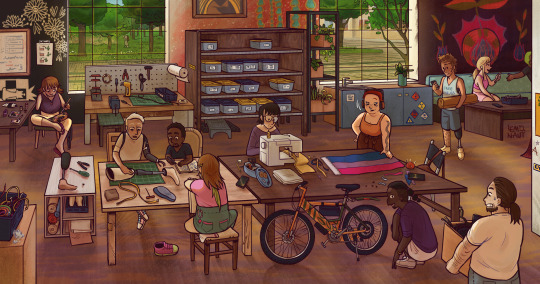
Maker/Hackerspace by Lemonaut
206 notes
·
View notes
Text

21 w0w w0w 12
1 note
·
View note
Text
Reimagining Sustainability: Challenging The Status Quo Through Alternative Systems
Élisée Reclus, a renowned geographer and anarchist thinker, offers insights that resonate deeply with critiques of colonialism, nationalism, imperialism, and capitalism. His philosophy emphasizes the interconnectedness of humanity and the environment, advocating for decentralized, cooperative societies that respect both human diversity and ecological integrity. Interconnectivity and…
#anarchism#anti-capitalism#Élisée Reclus#Bioregionalism#Capitalism#climate#Colonialism#decentralization#eco-socialism#Empowerment#Equality#Freedom#harmony#Imperialism#indigenous wisdom#Nationalism#Philosophy#Politics#Reclus#Sustainability#transition towns#worker cooperatives
0 notes
Text

1 note
·
View note
Text
Look up your local ecoregion. You absolutely do have one, if not local classification, then at least you can look on places like OneEarth Bioregions that can give you a description of what ecoregion you live in and its challenges and key species. You may also have a native plant society for your region that can help you.
Also go out into the world and identify plants you see locally. Then look up whether it is native or not. Many plant sites have maps of native ranges of specific plants.
And what is especially important is to link up with plant people. Any plant adjacent organizations, even community gardens, or the local naturalist, organizations that volunteer in parks, etc. Theres bound to be at least one plant person there. They will happily infodump about the plants native to the region and give you advice.
As a plant person, this type of plant unawareness is very annoying, but understandable because the lack of plant education in schools across the world is absolutely infuriating. Once you know about the world of plants you can never go back. Its like people who were not taught the world was round or that the stars are a vast universe beyond.
Folks, if you are talking about or sharing anything about “native plants”, please mention *your* location and *where* the plants are native to, not only country-wise but environment-wise.
So many people are learning about rewilding, gathering, foraging and gardening for food in harmony with the environment entirely online. Making your information clear for those people takes you little effort and limits confusion and misinformation getting out there.
The internet isn’t only “not just America”; many nations contain different environments with materially different conditions.
I live in Scotland. Most of the gardening and foraging information I get in the UK is calibrated for the south of England, which is a really different environment from mine - spring can come up to a month later and the south is semi-arid, which Scotland is *not*.
These days I actually look at a lot of Danish and Swedish gardening advice because their environment is a lot closer to mine. And that’s within one small nation. The world is wide and full of incredible diversity.
I am seeing UK-based pages sharing information about “native lawns” which contain plants from arid areas of the US because there’s no specificity in the original post. A small amount of information in the post, even a few lines, about locations, environments, context and goals would prevent this sort of confusion and incorrect information from spreading.
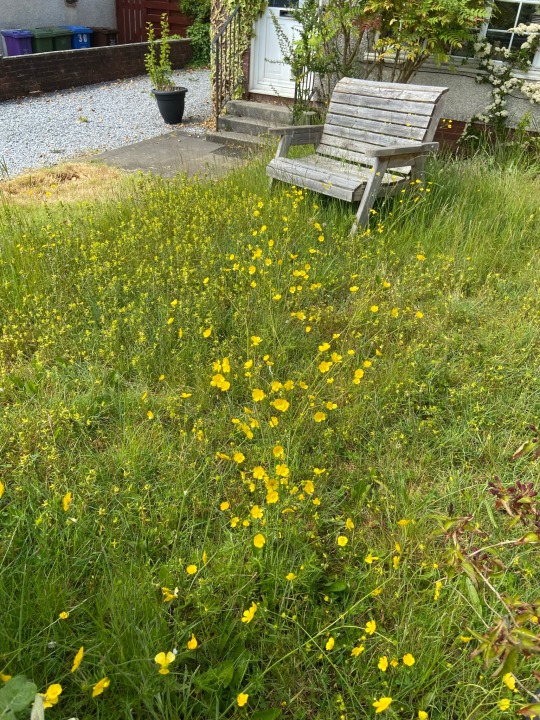
A lot of people are really enthusiastic and ready to be engaged in gardening for food, rewilding, gardening in harmony with the environment, soil preservation etc, but confusion and feeling they can’t trust information sources can really kill that. Make it easy for people new to the movement where you can, please.
ID: some photos of my native rewilded lawn from Scotland, UK, containing buttercups with butterfly eggs on them, yellow rattle, a willow tree, wild orchids, and many different grasses, and my small garden pond upcycled from a Belfast Sink surrounded by wild grasses, ladies’ mantle and wild geraniums and with woundwort and pondweed growing in it. There is a short path mowed in the lawn to allow safe passage of mobility devices and a wooden bench sitting in the long grass. A somewhat overgrown gravel drive and a front door with three steps up to it can be seen. The photos were taken in early June 2023.
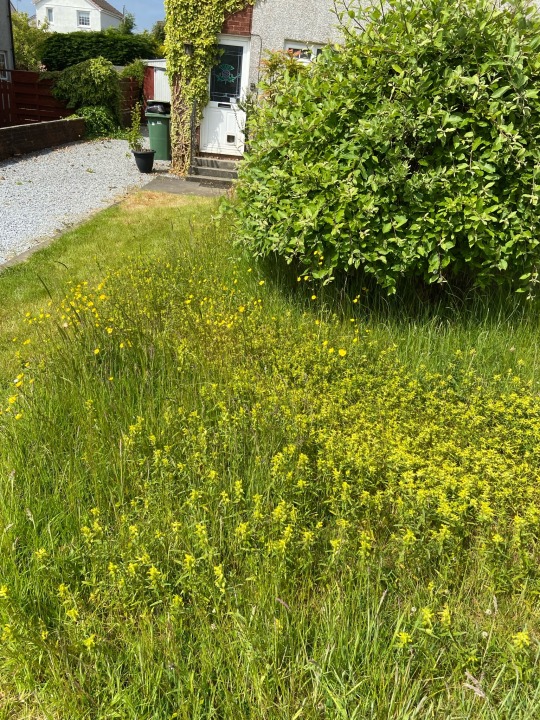
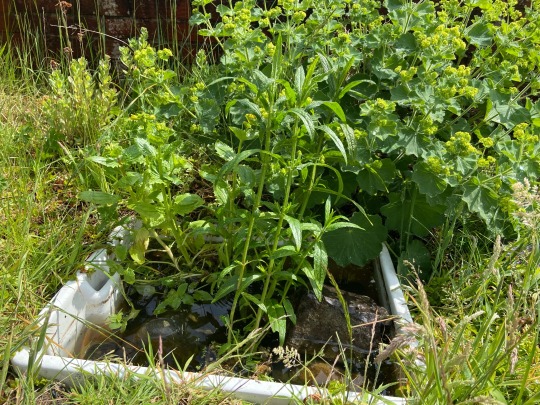
#rewilding#native plants#foraging#biodiversity#bioregionalism#gardening#plant identification#plantblindness#plantawarenessdisparity
515 notes
·
View notes
Text

#Global Crisis#Post-growth#post-capitalism#post-collapse#Existential Risks#Economic Growth#Ecological Footprint#Sustainable Development#Traditional Renewable Energy#Eco-villages#Permaculture#Commons & commoning#Bioregionalism
0 notes
Text
Bioregional Magic: Sustainable Ways to Work with Native Plants
Note: Post Contains Personal Anecdotes and UPG
As someone with a nature-based practice, I completely understand the desire to work with native plants. Many of us are deeply compelled to foster a connection with our land spirits and the local flora and fauna.
But with the normalization of consumption in witchcraft spaces paired with unethical wildcrafting and foraging practices, it's important to be careful. We don't want to harm the native plant populations and the wildlife that depends on them in our quest for a more localized practice.
Learning which plants are safe to harvest
By safe, I don't mean safe to handle or consume, though this is also crucial knowledge for anyone harvesting wild plants in general. I'm specifically referring to whether or not the collection of native plant matter will make a negative impact on the local ecosystem.
Think of it this way, if your practice is spirit-focused. Will the collective spirits of certain plants really want to assist you if you're devastating their population for your own gain? IME the answer is a hard no.
Take a look at a field guide and start identifying some of the native plants in your region. Are some of them listed as endangered, threatened, or special concern? Now you know which plants you should never disturb or collect materials from.
If not threatened, are some species generally harder to find? Are they present only in a certain type of environment? Do they take a long time to mature and/or have a very specific method of seed dispersal? Proceed with caution.
Example:
Common Blue Violets are one of the first plants to bloom in my garden during springtime. I also consider them very important in my practice and like to harvest them for certain rituals. But like I said, they're one of the first native plants to bloom during spring. Which means there are going to be pollinating insects, songbirds, and small mammals which rely on these plants for food. And predators who rely on those animals.
Since this is a hardy plant that usually grows in abundance, it's okay for me to harvest some from the garden for personal use. But I still need to leave enough to serve as a resource for wildlife and allow it to reproduce for the following year.
On the contrary, I never touch my wild Bloodroot. I only have two or three plants in the garden, their seeds have double dormancy germination requirements, and they take 2-3 years to reach blooming size. I have only ever collected seeds for propagation, and even then do it rarely because I know that the ants do a much better job at this than I could.
So when we can't harvest materials to use for tools and ingredients in workings, how do we utilize these plants in our practice?
Physical Representations and Symbolism
Images, objects, and symbols representing the plant can be used to substitute organic matter that you would otherwise collect and use for workings. Consider art pieces or photos, sculptures, sigils and seals, paper cut or folded into the shape of leaves or flowers, etc.
If the plant is your main component or energy source, consider designing the working to cater to this. For example, if I'm petitioning the spirit of milkweed, I might want to incorporate aspects of air and wind, since this is how their seeds are distributed. Or I may want to add some lunar energies knowing that this is the planetary correspondence for milkweed. This is would completely depend on my intent for the specific working and which physical or spiritual aspects of the plant I choose to work with.
If you're seeking a more long-term effect, try getting crafty and using symbols of the plant to decorate your own tools. I'm talking homemade oracle cards, painted jars or boxes for container spells, decorated offering bowls, ritual jewelry, and so on.
Working with Living Plants
This one is for the spirit workers. While it's entirely possible to petition plant spirits, especially collectives, solely using imagery, working carefully with a living plant can help establish a more direct spiritual connection.
This can be done by conducting your working outdoors, inviting the spirit of the plant into your space, and asking for assistance. During this time you would leave an offering, usually fresh water, but you can also offer things like soil or compost. Obtaining a working knowledge of certain plants can help inspire ideas for more creative, species-appropriate offerings, giving your spells and rituals an extra boost.
Now if this were a plant that was on a special concern or endangered species list, I would avoid offerings and actions that could potentially disturb the plant in any way. I may work within a few feet of the plant and present my offering in a bowl, removing it at the end of the working. I would definitely avoid touching it or say, pouring out water over the soil where it grows.
While we're on the subject of offerings, consider acts of service. Once again, we're going to use milkweed as an example. If I want to leave a nice offering for the spirit of milkweed and I know that Black Swallowtails feed on the nectar and pollinate it, I may offer a potted plant of dill placed in the wildflower garden. This is because Black Swallowtail caterpillars love to eat dill and will later pupate into adults, which will be beneficial for the plant. Consider different species and their relationship with each other. You may even get multiple spirit allies out of the deal.
Cultivation and Seed Distribution
Now, we've talked about ways to avoid harm when incorporating native plant species into our practices, but what about making a positive impact?
The Act of Growing Things is actually my favorite part of plant magic. Sure, I love harvesting my vegetables, fruit, and herbs to use in various recipes, and wild plants I find in the yard are excellent allies. But there really is something special about watching a tiny seedling grow into a full-sized plant, or seeing that delicate young native perennial thrive during its first year outdoors.
Whether transplanting or growing from seed, you're inevitably going to develop a strong relationship with that specific plant. You'll learn all about its growth rate, ecological benefits, soil requirements, and more. This will lead to folklore, correspondences, and later on your own UPG related to where this plant fits within your practice.
Another option, if you don't have the energy for more hands-on cultivation, is seed scattering. Disturbed areas like roadside ditches or even your backyard are perfect for this. Whether scattering or growing in starter pots, seeds can be charmed or enchanted with a specific intent and planted as a sort of living spell.
I use Prarie Moon Nursery for my seeds, but there are plenty of other affordable online vendors. You can also check out what's available locally. There are a few native-focused nurseries in my area that have a nice variety of options depending on the season.
#bioregional magic#plant magic#nature veneration#nature magic#spirit work#witchcraft community#witchcraft#witchblr
61 notes
·
View notes
Text
Foraging in Witchcraft

I'm a big fan of working with the land, and one of the easiest ways to do so is by gathering your own plants. This is also free! No having to stop at an occult/metaphysical shop to pick up that random plant you forgot you needed. I will be making individual posts on different plants that can be foraged in my own bioregion, but first we should go over a few tips and housekeeping notes about foraging and witchcraft.
⸙༄𓆤𓆩𓆪❁𓇢𓆸🏵
Contents:
Natural Isn't Always Safe
Laws and Foraging
Invasive vs. Native vs. Naturalized
Animistic Foraging
Conclusion
⸙༄𓆤𓆩𓆪❁𓇢𓆸🏵
Natural Isn't Always Safe
First thing I want to get out of the way is that not everything you find outside is going to be safe to put in your body or even touch. On top of that, not everything that is safe for someone else is going to be safe for you. We each have different bodies and how we react to something will not always be the same. When you first start foraging, it's important to have a guide book that will tell you of any safety measures to take when dealing with a plant. Some will interact with medications in ways that are not healthy, some have fluid that can make your skin photosensitive, and some... some people are just allergic to.
When it comes to medications, you can find contraindications (when not to ingest something) with a quick google search of "[plant name] contraindications." Generally this will give you a safe answer, however always check with your doctor if you are unsure. Better to pay for a consultation than a hospital visit.
Some risks come from the environment that the plant grew in. If you are foraging near train tracks or buildings that could leach lead into the soil, the plants will pick that up as well. Contaminated soil and pesticides sprayed onto the plants can also lead to health risks. Be very mindful of where you are foraging.
Some plants that are safe will also have toxic look-alikes. A famous look-alike is wild carrot and poison hemlock (thank you Oregon Trail video game). Unless you know what characteristics you are looking for, it's very easy to confuse the two plants. One is a delicious snack, while the other is highly toxic (the poison hemlock), to the point of causing muscle death and kidney failure. This isn't to scare you away from foraging. Only to drive home the importance of making sure you know what you are gathering.
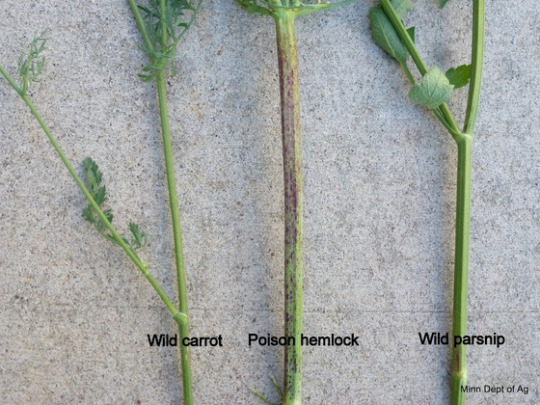
*credit to the Minnesota Department of Agriculture
⸙༄𓆤𓆩𓆪❁𓇢𓆸🏵
Laws and Foraging
I am a resident of the United States so these will be more geared towards that country. It would be to your benefit to look into the foraging laws of your own country/state anyway, as it can still differ. The majority of states in America prohibit foraging on public lands, which makes it really hard for those who don't own their own property. If you live in Alaska and Hawaii, however, congratulations your local government allows it. Even among those states that do allow it, there can be designated areas where it's not allowed such as a nature preserve. Breaking these laws tends to come with a hefty fine and possible jail time, if caught. Though these laws are hard to find with a quick google search, especially for a specific area.
The laws in the United States prohibiting foraging are generally colonial, imperial, classist, and racist (surprise, surprise). Foraging was protected by law well into the 1800s (except for Native Americans who were pushed off their ancestral hunting and gathering grounds), even when doing so on another person's private property. After the Civil War, many newly-freed African-Americans would sell their foraged and hunted goods for an income, while also using the practice to become self-sufficient. The southern plantation owners needed this system to go away so they could chain what used to be their "property" to their old line of enslaved work. Starting with criminal trespass laws. Eventually anti-foraging laws spread to the average white rural American. Outside elites began to believe that the "backwards" people of the countryside, who made a subsistence living off the practice of foraging, fishing and hunting, could not be trusted with the stewardship of the land; using "conservation" as a way to "protect" it from the people who lived there (Linnekin, "Food Law Gone Wild: The Law of Foraging" p.1008-1014).
I do believe we need to protect our resources and lands. However, foraging can be regulated, not outright outlawed as it is. Learning about the plants and animals that live around us and can help us in our lives, leads us to learn more deeply about their role in the environment and just WHY we should protect them...
All this to say, look into your local foraging laws (and how local law enforcement actually enforces them, if they do at all) and then you can decide if you want to follow them or not. At your own risk.
⸙༄𓆤𓆩𓆪❁𓇢𓆸🏵
Invasive vs. Native vs. Naturalized
There is a lot of talk in foraging communities about invasives vs. natives. Sometimes even bringing in naturalized plants. So let's talk a little bit about what these words mean in ecology and how this may effect your foraging habits.
Invasive and naturalized plants have one thing in common; they are both transplanted outside their natural ecosystem. A plant that is invasive in one place, can be naturalized in another. What matters is the impact the plant has on the ecosystem it has been transplanted into.
Invasive = plants or animals that harm regional ecosystems.
Naturalized = plants that have successfully established and reproduced in a new environment, integrating into their new home without inflicting ecological harm.
To make things a bit more complicated, let's introduce the 10% rule. According to the Huron River Watershed Council, "the '10% rule' postulates that of all species introduced to a region outside of their native range, only 10% will survive to reproduce in their adopted environment. This 10% of non-native survivors are often called 'naturalized' plants. Of that 10%, another 10% (or 1% of the original non-native transplants) may thrive to such an extent that they dominant their new home, out competing their native neighbors. These prolific competitors are known as invasive species."
So what makes a native plant? The US Forest Service defines a native plant as "plants [that] are indigenous terrestrial and aquatic species that have evolved and occur naturally in a particular region, ecosystem, and habitat. Species native to North America are generally recognized as those occurring on the continent prior to European settlement."
Some native species can be endangered due to habitat loss from agriculture and/or competing invasive species. It's good to have a list (many state DNR (Department of Natural Resources) will have a list available on their website) printed so you know which ones should be cultivated in your garden if you wish to work with them. Avoiding these and working with invasive species can help with conservation efforts as well. Native species can still be worked with in the wild if they are not endangered.
⸙༄𓆤𓆩𓆪❁𓇢𓆸🏵
Animistic Foraging
You'll often see witches giving advice about asking the plants permission before harvesting. This is from the belief that the plant has a spirit, an animistic belief. Asking permission to harvest isn't the only way we can forage mindfully and with respect to the plant. The way that I do this is by following the Honorable Harvest set out by Robin Wall Kimmerer (a Potawatomi botanist, and the director of the Center for Native Peoples and the Environment at the State University of New York College of Environmental Science and Forestry) in her book "Braiding Sweetgrass."
Know the ways of the ones who take care of you, so you may take care of them.
Introduce yourself. Be accountable as the one who comes asking for life.
Ask permission before taking and abide by the answer.
Never take the first, never take the last.
Take only what you need.
Take only what is given.
Never take more than half. Leave some for others.
Harvest in a way that minimizes harm.
Use it respectfully. Never waste what you have taken.
Share.
Give thanks for what you have been given.
Give a gift in reciprocity for what you have been given.
Sustain the ones who sustain you and the earth will last forever.
The first rule really helps you to follow the rest of them. Know the plant. Walk by it several times, offer water even if you aren't taking something, say hello. These plants are our neighbors and when we harvest we are asking for their help.
⸙༄𓆤𓆩𓆪❁𓇢𓆸🏵
Conclusion
Each plant will have it's own method of harvest to minimize the harm done to it. Some you have to pull the whole thing up, but there are ways to repopulate it. It's so individual that I couldn't add it to this post. Hopefully what's written here can help you keep a few things in mind when going out and learning about your local flora.
Foraging can be a great way to connect with your land and learn about it. Getting your hands dirty and making you feel as if you are a part of the landscape. Hopefully the first couple of sections didn't scare you off. Get a couple of good guidebooks for your region (the local library is a good place to start) and you're good to get out there and start identifying plants you want to work with!
69 notes
·
View notes
Text
North = Earth East = Air South = Fire West = Water
While it’s really easy to be like “sure, those are just the standard,” to me they also make a lot of sense for where I live. Specifically, my office has a southern facing window, so I have sun (heat) from that direction for most of the day. The Atlantic coast is to the east of us, and the winds that blow from the east are particularly devastating because of that coastline. Waaaay to the west of us is the Mississippi river. The Great Lakes are out that way too, and Minnesota with all its lakes too.
It may be strange to reference the Midwest for water when I live 2 to 3 hours from the ocean, but I grew up on the Mississippi. I spent years of my life in and around the Mighty Miss, and for me, it’s always going to be a part of me. There are days when I yearn for it, to be honest. To me, water is always going to be where the Mississippi is in relation to myself.
What are your elemental associations for the directions for where you live?
For me it's North = air East = earth South = fire West = water
139 notes
·
View notes
Text
Just learned about bioregions??? Insanely cool? You can look up yours on OneEarth.org. Hello from the Celtic Broadleaf Forests!
#solarpunk#hopepunk#cottagepunk#environmentalism#social justice#community#optimism#bright future#climate justice#tidalpunk#bioregions#ecoregions#biogeographic realms#alternative place names#nature#Anglo-Celtic Isles
95 notes
·
View notes
Text
Caribbean Folk Saints and Mighty Dead: A Precursor
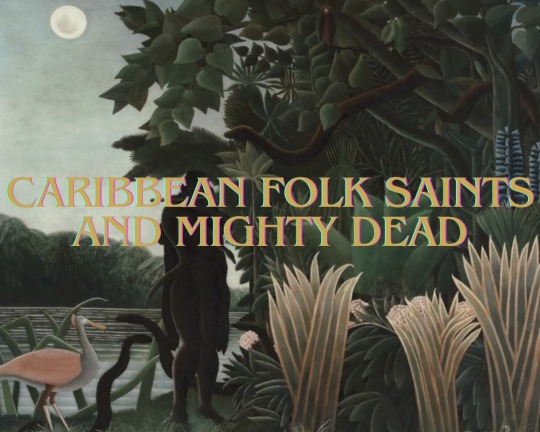
We all have family members who take on an almost Mythic quality after they pass on. They may have been a character in life, or a perhaps a spiritual practitioner. Maybe they were known for their generosity, or lack of it, or their strength or brilliance. Nonetheless, it is someone who, even in death, still makes an impact. In personal practices, we may work with these ancestors for guidance and healing, but what happens when their influence spreads past your family, into the local community or even entire country? This and many other strange circumstances often explain the origin and powers of Folk Saints and Elevated Dead. I will be going into the various Folk Saints and Deified Ancestors of the Caribbean, (including Florida), but before I can do that I need to explain where these spirits come from, and why they are so potent in our everyday lives.
What are Folk Saints and Mighty Dead?
Folk Saints and Mighty Dead are spirits of dead people who were either elevated in life, or became elevated after death. Their elevation often is then connected to their ability to grant various petitions made to them. Some of the Folk Saints I will be talking about were used to disguise other figures who were outlawed by the Colonial government at the time, while others are various figures of marginalized communities who gained sorcerous or otherworldly reputations after death.
Cuba and Florida are Lands of diaspora and syncretism. Many different traditions abound and each tradition has multiple lineages, so the classification of spirits differs depending on the worldview of the person explaining. Some practitioners work within a framework of Catholicism, some use elements and some flat-out reject Catholicism completely for decolonization purposes. For this reason, I have differentiated Folk Saints from the Mighty Dead.
Folk Saints will include those spirits who are worked with in a Catholic context, but are usually not canonized or not at first. On the other hand, the Mighty Dead will include spirits who are venerated amongst Indigenous and African traditions in Cuba as well as the surrounding areas, as to not group them under a title created by Colonizers. If you are Cuban or Caribbean, these Folk Saints and Mighty Dead offer power at a closer degree because they are more proximal to your Spirit Court, and may even already have bonds with them.
It is important to note, spirits like Orisha and Cemí have very specific protocols, manners and taboos when approaching them, so this is best done with the help of a priest, such as Oloricha or Babalawo, or a Taíno Behike. These are not energies you simply feel drawn to and work with. Orisha and Cemi are in some cases Deified Ancestors and others Personified Forces of Nature, among other things. This varies from the Ancestors and Spirits I will be discussing in this series.
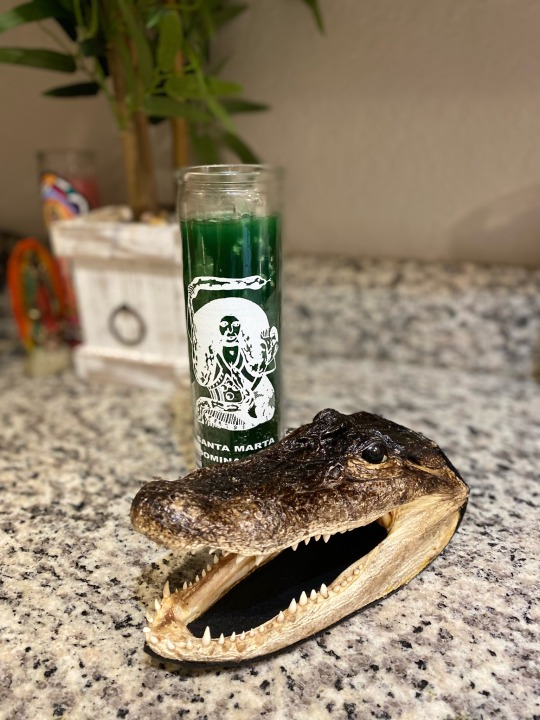
Benefits of Working with The Mighty Dead
Folk Saints and Ancestors give us a closer connection to the divine through their proximity to the Divine and their individual virtues and personalities. As with all spirit relationships, you will get out what you put in.
Folk Saints who are related to the Land you live on, such as Uncle Monday or Bessie Graham for us Floridians, can help to deepen your connection with the local community. They can help you to further your relationship with the Earth and introduce you to other Land spirits.
Spirits related to your Ancestry can help to work through generational issues. Some ancestral spirits, like José Martí or Guamá for us Cubans, are related to ideas of War, Rebellion, and overcoming oppression. These spirits can be worked with for the same pursuits of defeating oppressors in the modern day. Each spirit has a story and is multi-faceted, so it really depends on what your connection is to the Spirit and what you are capable of offering them.
How to Work with Deified Dead
Working with these spirits is individual to each spirit, based on what their heritage is, as well as their personal tastes. When starting out, it’s best to keep things simple. Instead of going and creating an entire altar dedicated to a spirit, begin by praying about it at your Bóveda or ancestral altar. Here, you may find that a spirit is not compatible with your current situation, or doesn’t want to work with you ever! Should the omens be good, however, and you may begin establishing a connection to that spirit Research and talking to other devotees can give you great insight into what a relationship with that Spirit can look like.
My formula for reaching out to these spirits is always different, but I follow basic principles. I always begin with a representation of the spirit, a small offering and a candle. The representation can be anything, from a statue to a printed picture or even just their name on some paper. The offering is in most cases water until the spirit makes other wants known to me, but when a spirit doesn’t take water I offer food or tobacco instead. The candle is something I was taught helps to enhance spirit communication, carrying messages between the worlds. It is helpful to research about whoever you are attempting to communicate with, and if possible you should speak to other practitioners who work with the same Spirit. Often times, this is someone-you-know’s father or grandmother. From here, you should sit with whatever entity you are contacting, allowing yourself to experience a personal relationship with them. I will share individual experiences of what each spirit has been like in practice for me, or people I know, but for beginning this is a good basic way to start out.
I look forward to sharing more about these incredible figures who influence my favorite corner of the world to this day.
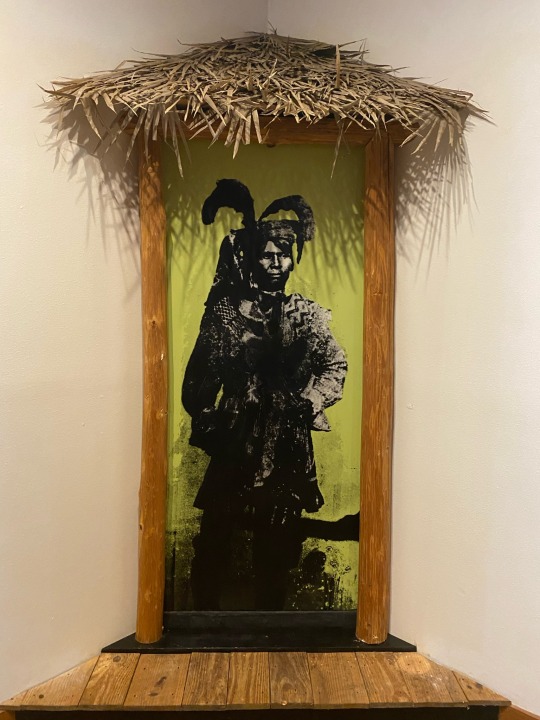
Paz y Progreso 🕯️
#witchcraft#florida#bioregional animism#bruja#brujeria#florida witch#santeria#swamp witch#witch#traditional witchcraft#cubanfolkmagic#cuban#cuba#taino spirituality#taino#folk magic#folk witch#espiritismo#atr#folkloric witch#animism
106 notes
·
View notes
Text
Solarpunk Art 2023 (BIOREGIONS)
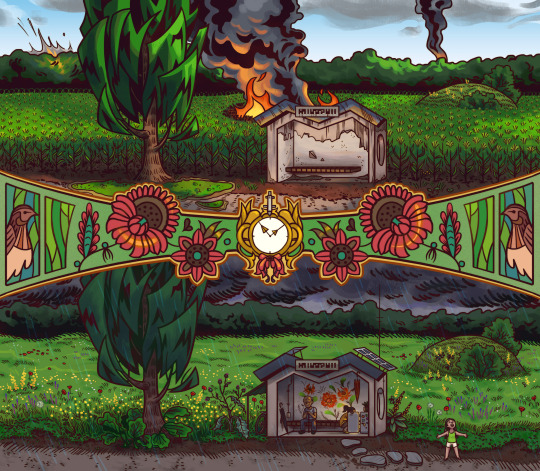
Temperate Grassland in Ukraine by @the.lemonaut.
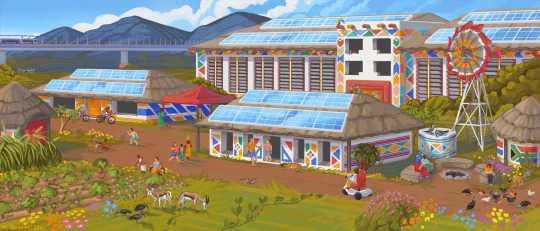
Desert/Xeric Shrublands in South Africa by @draakart

Mediterranean Forests/Scrubs in Southern California, USA by @helentadesseart
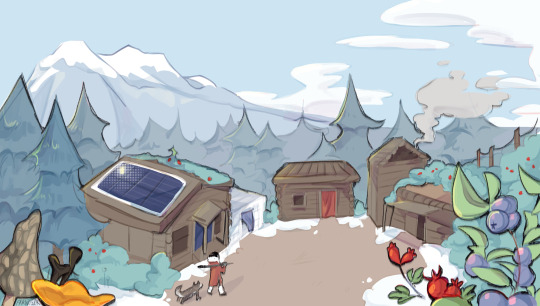
Boreal Forest by @_frandszk.

Mediterranean Forest/Scrubs in Tijuana, Mexico by Limonarte
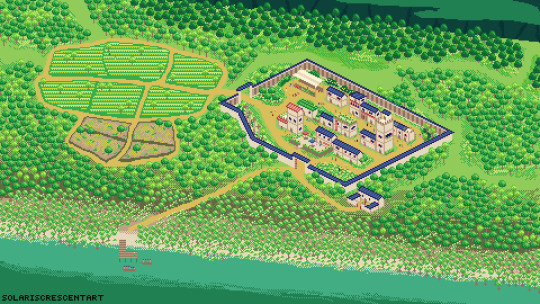
Subtropical Evergreen Forests in South China & Vietnam by @solariscrescentart

Tropical & Subtropical Moist Broadleaf Forests in the Philippines by @lacan.lacapat
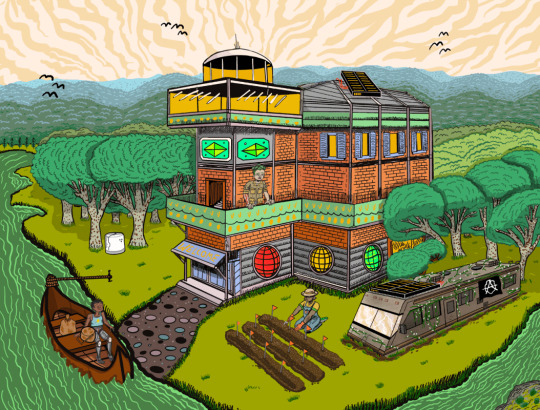
Temperate Broadleaf & Mixed Forests in the Ozark Highlands of the USA by Xiantifa
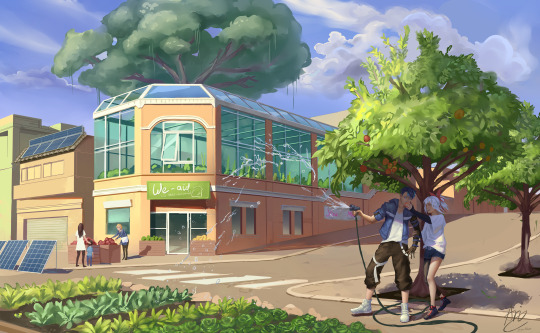
Temperate Broadleaf & Mixed Forests by Arikadough
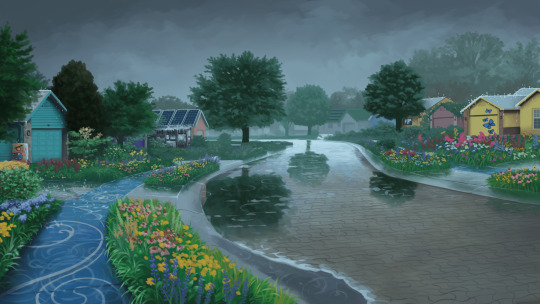
Temperate Broadleaf & Mixed Forests in Indiana, USA by Toby Raab
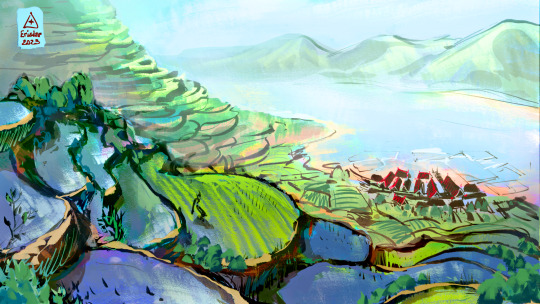
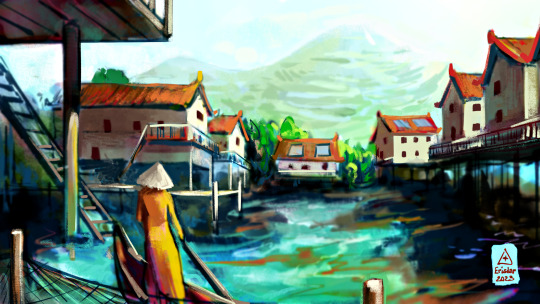
Subtropical Evergreen Forests in South East Asia by @erisdar_art


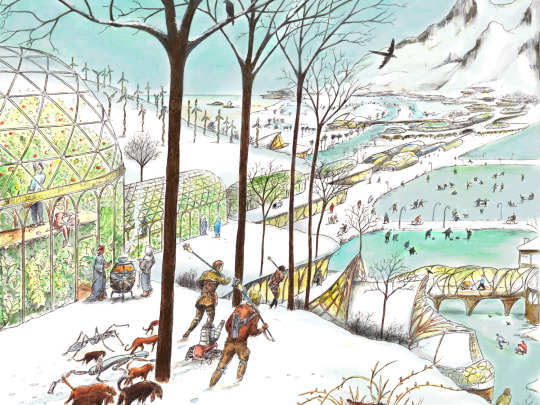


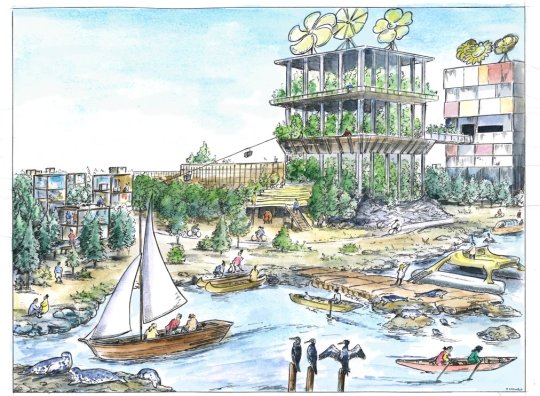
Various Bioregions by Dustin Jacobus (@solarpunkart)
779 notes
·
View notes
Text
There is a stark difference between knowing water is important and understanding it.
14 notes
·
View notes
Text

Spotted these white walnuts (butternuts) on our morning walk. I’ve foraged these in the past to use in baking and natural dying and ink making.

#white walnut#butternut#foraging#Arkansas#Arkansas River valley#Ozark foothills#bioregional animism#September#native tree#natural ink
18 notes
·
View notes
Text




Wilson Arch, Utah. January 2025.

#entrada sandstone#wilson arch#southwest bioregion#light academia#earth#earthcore#lichen#geology#artists on tumblr#archway
3 notes
·
View notes
Text
This full moon is making me so sad. Locally, it’s known as the Saturation Moon. It’s when the soil is supposed to be dark with water after two months of rain.
We’ve gotten half an inch since October and none on the horizon.
I should have listened harder to the Elderberries. They told me it was going to be a bad year.
4 notes
·
View notes